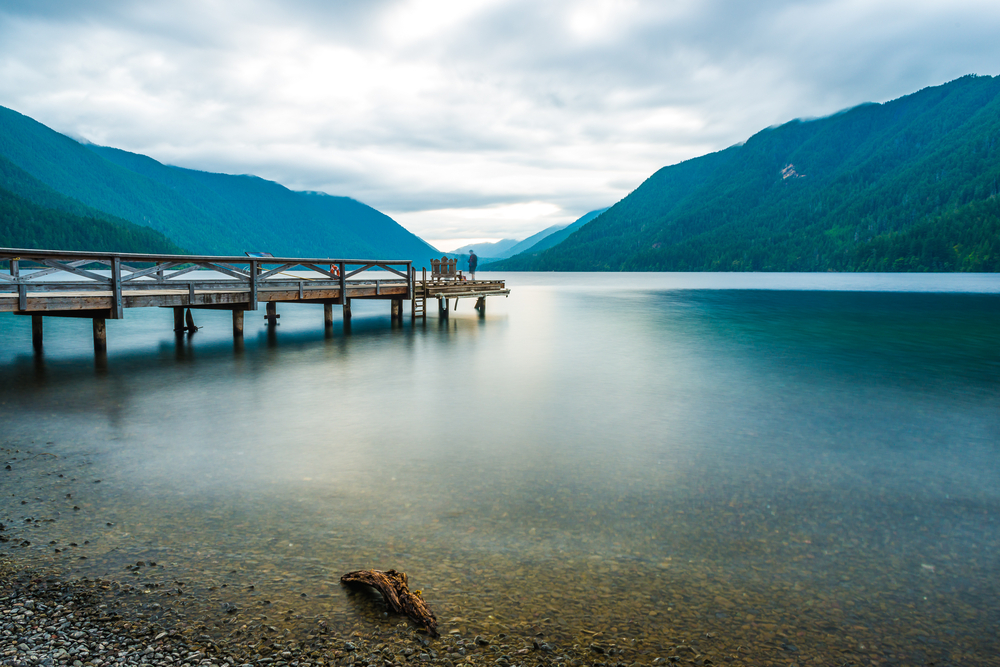
I was five. The shadows of the forest danced around me and I shuddered in fear. The darkness was unlike anything I’d felt before; deep and unforgiving. My old man threw another log on the glowing embers of the campfire. Sparks flew upward, into the black. My dad quietly sang an few notes of Landslide as I leaned into him, his wool shirt scratching my face. I stared at the log — orange and red flames lashing its bark — and then, finally feeling safe, allowed sleep to wash over me. It was my first night in Olympic National Park.
I awoke in our 12-foot camper. The smell of boiled coffee, stale camping gear, and propane fuel filled the room. I managed to put my boots and jacket on and stumbled out of the camper, popping the aluminum door with my shoulder to get it open.
Outside, we were surrounded by trees so tall that I couldn’t see their tops. I was in awe. As the day progressed, we hiked past Staircase and deeper into the park. It was my first time in a place that had provided food, religion, and refuge to my dad’s people, the Skokomish, for eons.
Over the years, I spent countless summers and autumns in and around Olympic National Park — exploring places like Elwah, Dosewallips, Kalaloch, Hoh, Quinault, and Ozette. In the protected area around the park, we fished the rivers for steelhead and hunted the mountains and forests for bear, deer, grouse, and elk. Year after year, there was always some new new grade, or stand of trees, or meadow, or peak to discover. Credit that to the park’s diversity — where temperate rainforests give way to alpine meadows teeming with lakes, streams, and fauna. Icy glaciers hug the jagged peaks as they loom over western Washington state before dropping sharply toward the sea, where the land once fell into the ocean.
Below you’ll find some highlights of one of America’s many spectacular National Parks. If you’re in the Pacific Northwest, an adventure in the Olympics is worth every effort. It’s one of the only national parks where you can climb a glacier and surf an ocean. It’s about as diverse as you can get. And I still can’t believe how lucky I was to get to grow up there.
RAINFOREST
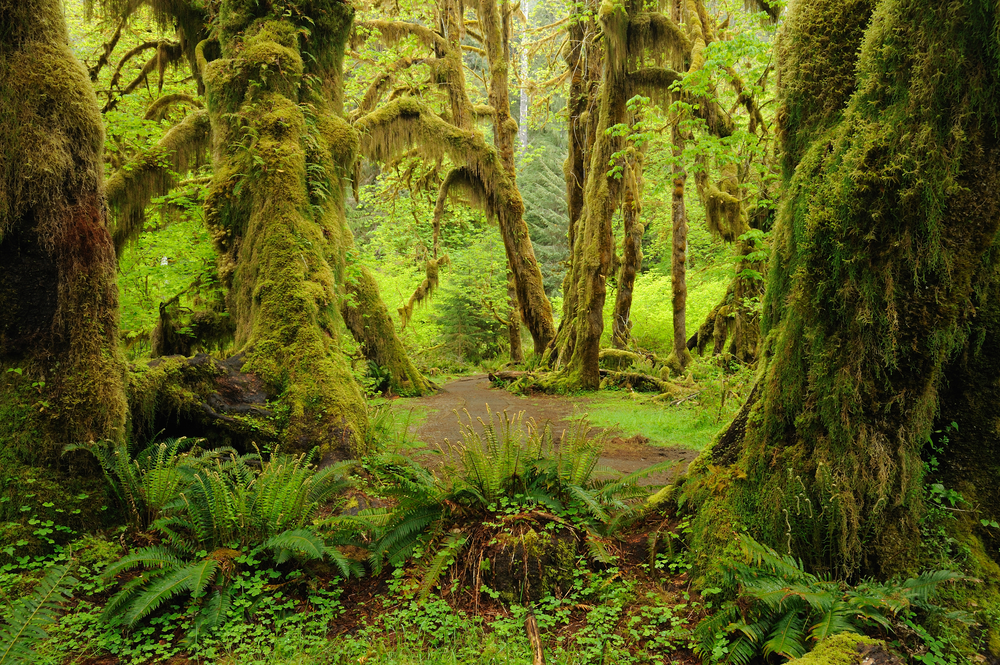
There’s a stillness to a temperate rainforest that you don’t find in a tropical one. The cacophony of animals in the tropics make those rainforests as loud as a football stadium. The rainforests of the Olympics are eerily silent, though still full of life. It’s as though the moss has provided the perfect sound-proofing to dampen every footstep, broken branch, and deer’s snort.
The three main rainforests to explore in the park are the Hoh, Queets, and Quinault. The Hoh is otherworldly. You’ll find yourself in a dank sanctuary of trees laden down with impossible amounts of heavy, green moss thanks to over 12 feet of yearly rainfall. The moss gets so heavy, the trees start to dip and bend, creating arches over trails, like some enchanted wood of yore.
LAKES AND STREAMS
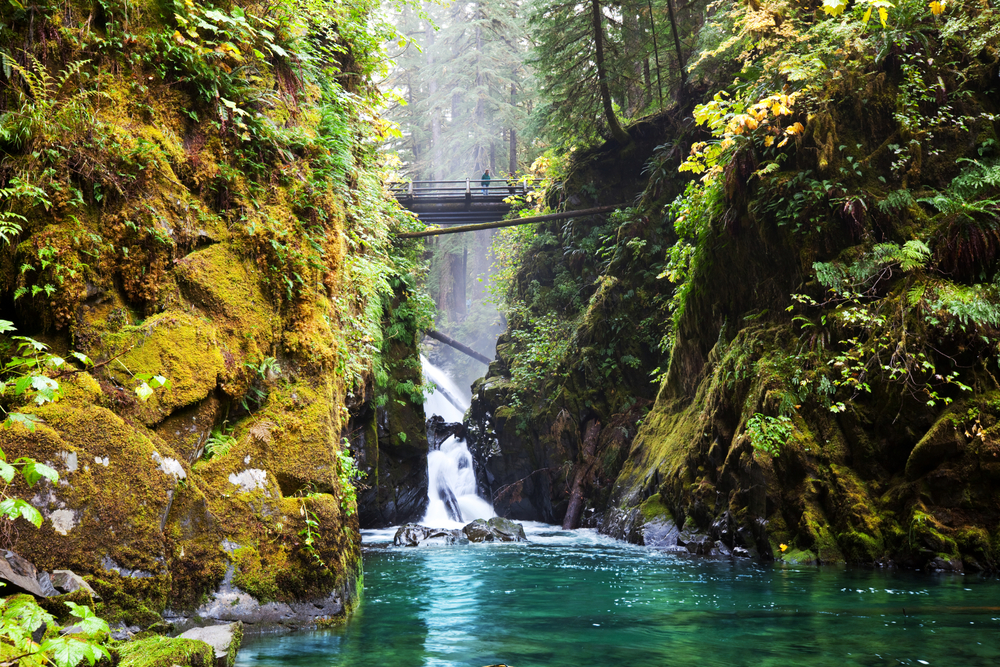
Put together mountain glaciers and a dozen or so feet of rain fall, you get a lot of water. Gravity draws that water down towards the Salish Sea and the Pacific Ocean in a spectacularly dramatic manner.
The Elwah Valley is one of the largest ecosystem restoration projects in the whole of the national parks system. The Elwah Dam nearly destroyed an entire unique ecosystem along that valley. Today it’s finally making a recovery and you can witness a river literally being reborn. Another great spot is down near the southeastern reaches of the park on the Hamma Hamma river. The river falls quickly as it races towards Hood Canal and offers awesome rapids for kayakers. You’ll also be able to the end the day by treating yourself to some Hama Hama Oysters on the river’s estuary.
WILDLIFE
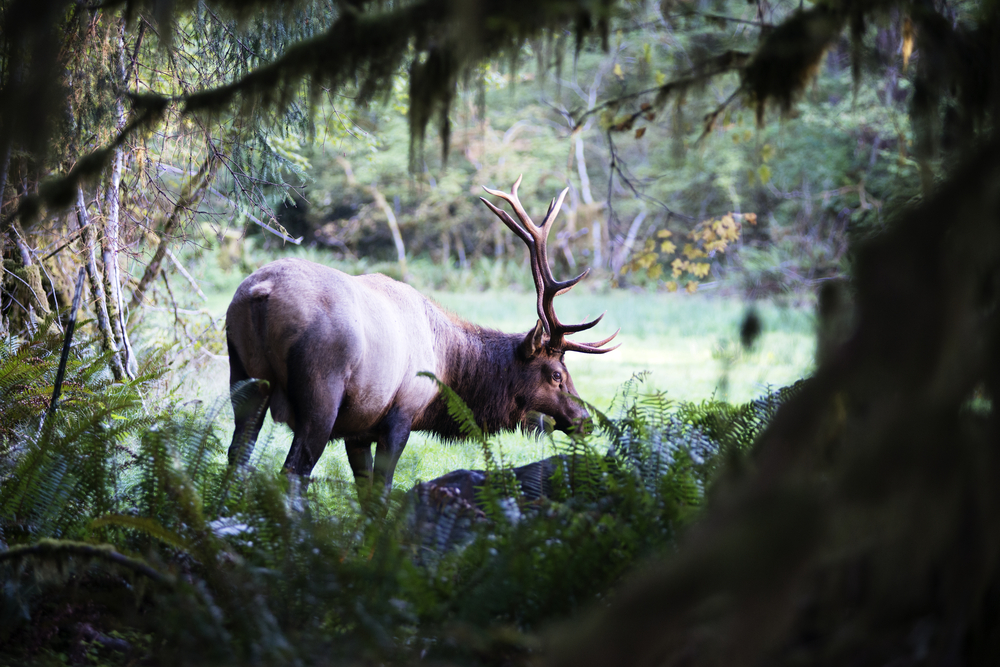
Hunting in the park is prohibited. However catch and release fishing is permitted if that’s your thing. Perhaps the best way to hunt any animal in the Olympics is with a telephoto lens and some patience. The park is home to elk, mountain goats, deer, whales, salmon, marmots, cougars, bears, and a bevy of fowl.
Some of those animals are going to take some serious hiking and luck — bears, cougars, and mountain goats aren’t exactly sociable. And, please, exercise extreme caution in areas where those animals dwell. However places like Hurricane Ridge, the lower valleys, and the coast are prime locations for spotting every other animal that lives in the park. You can surf next to Orcas. You can spot deer and marmots at Hurricane Ridge feasting in the meadows. And you never know when you’ll run into an elk grazing on moss in a rainforest valley. The park’s website actually has a pretty informative page for finding the best spots and times to view wildlife in the wilds.
ALPINE
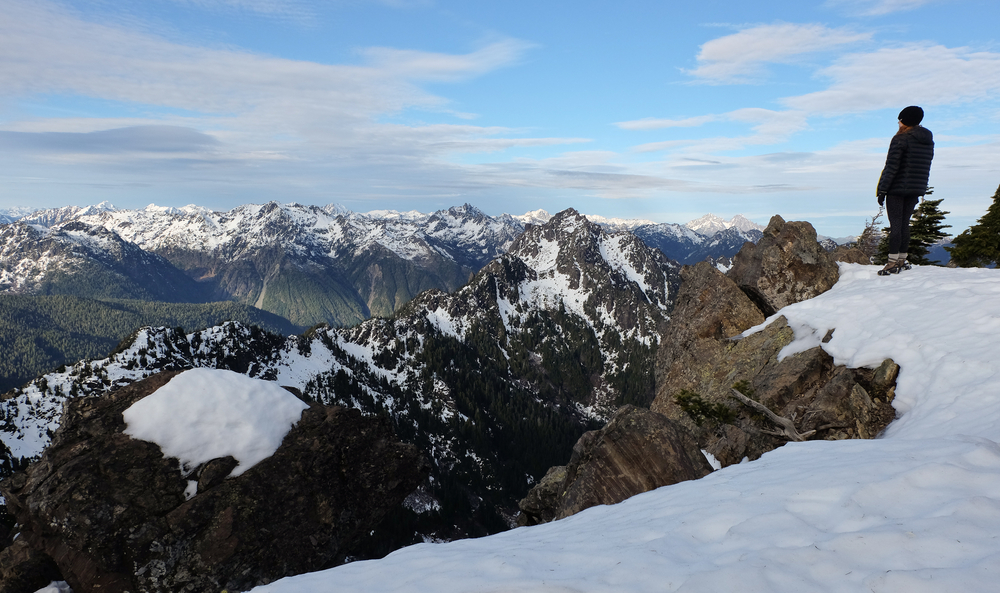
Above the rainforest you’ll find a spectacular array of meadows, old-growth timber, and lakes straight out of a Swiss postcard. The alpine section of the park sits pleasantly between the lower rainforests and the higher peaks and glaciers. It’s like a mellow belt of grassy inclines, motley wild flowers, grazing fauna, and blue skies. Coming up out of the rainforest into the alpine sector is like turning on a light switch in a dark basement. Suddenly the world around you is flooded with sky blue, meadow green, and mountain grey.
Deer Park and Hurricane Ridge are you best bets for experiencing the beauty of the mountains with a car. Otherwise, you’re going to need some gear and a time to hike in. There are thousands of miles of trails to explore and no cars — the park is the only one in the US with no through road. Want to be a daring adventurer? You have to do it on foot.
GLACIAL
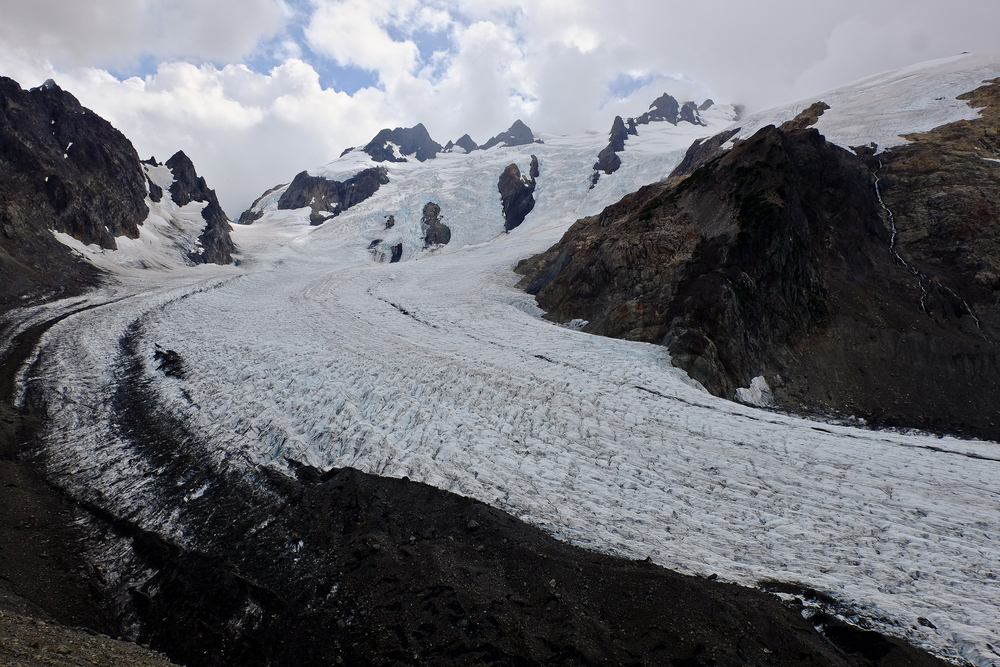
The Olympics are called Sun-a-do. The highest peak in the range is Sun-ha-do, rising 6,900 ft above sea level — a sea level that is only 33 miles away from its summit. Under the Blue Glacier the Thunderbird had its den, so it could reign over the high country and skies. Sun-ha-do was renamed Mount Olympus and many people forgot the tales of the Thunderbird.
Mount Olympus’ relative low altitude makes it an unlikely candidate for glaciers, yet it has seven. Don’t let the low altitude fool you — it’s still a real hike up the mountain in real conditions and requires planning and appropriate gear. Still, it’s on the easier side and worth every step to see a massive glacier up close and personal. Maybe you’ll even find the Thunderbird.
https://www.instagram.com/p/BIrRyjtghIN/
COASTAL
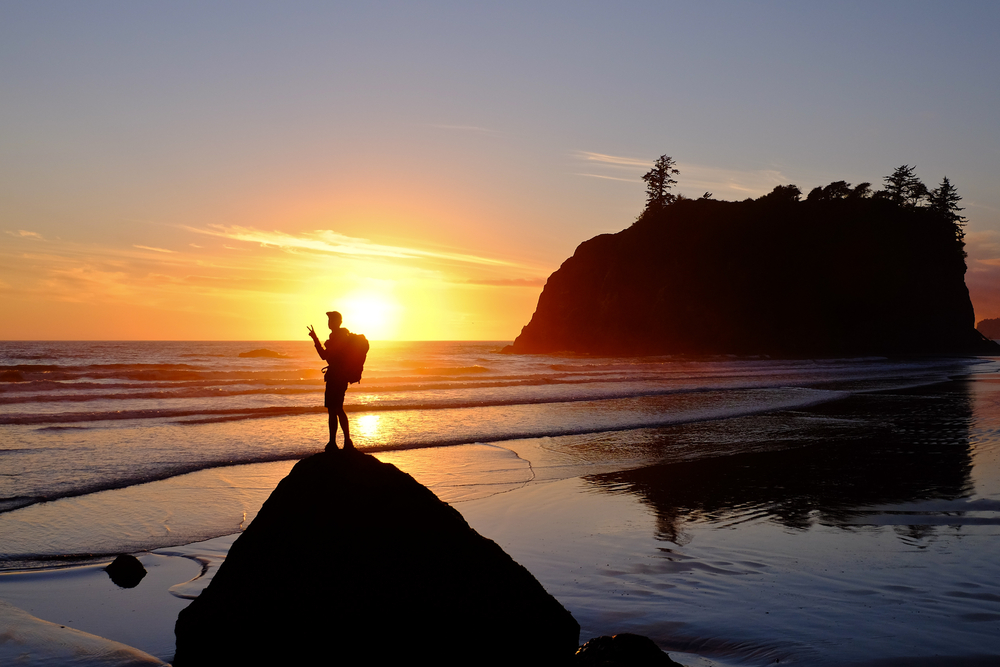
Down the mountain on the westward slopes you’ll find a long grey beach, stretching as far as the eye can see. Rocks and mounds of soiling pepper the coast, like they fell loosely out of the pockets of a giant. It’s a unique coast that hosts tidal pools, rock formations, ancient Indian villages, and waves worthy of your board.
The Hole In The Wall At Rialto Beach is picturesque and full of natural sea life. Green anemones dot the tide pools like technicolor flowers. Whales swim close enough to the shore for you spot them from the beach. You can also head up to Ozette and explore an Indian village preserved by a 1560 mudslide. Archeologists have pulled over 50,000 mostly wood artifacts from the site. It’s a ten mile hike into the archeological site, but worth every step to appreciate how long people have been calling this area their home.
https://www.instagram.com/p/BJPYhvzjMgU/
MORE PHOTOS FROM OLYMPIC NATIONAL PARK:
https://www.instagram.com/p/BH3j4WjBGbu/






